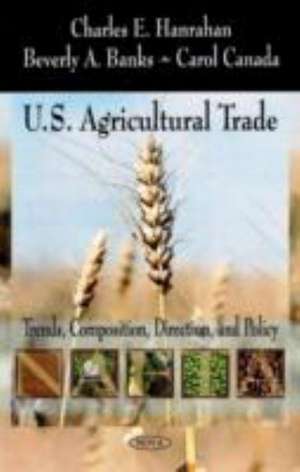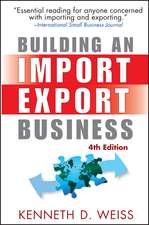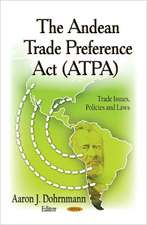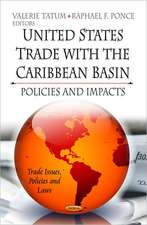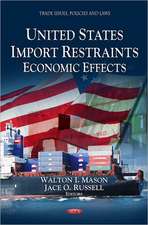U.S. Agricultural Trade
Autor Charles E. Hanrahanen Limba Engleză Hardback – 31 mai 2008
Preț: 289.30 lei
Preț vechi: 391.18 lei
-26% Nou
Puncte Express: 434
Preț estimativ în valută:
55.37€ • 57.59$ • 46.40£
55.37€ • 57.59$ • 46.40£
Carte disponibilă
Livrare economică 21 februarie-07 martie
Preluare comenzi: 021 569.72.76
Specificații
ISBN-13: 9781604564631
ISBN-10: 1604564636
Pagini: 71
Ilustrații: tables & charts
Dimensiuni: 140 x 211 x 6 mm
Greutate: 0.14 kg
Editura: Nova Science Publishers Inc
ISBN-10: 1604564636
Pagini: 71
Ilustrații: tables & charts
Dimensiuni: 140 x 211 x 6 mm
Greutate: 0.14 kg
Editura: Nova Science Publishers Inc
Cuprins
Preface; U.S. Agricultural Exports, Imports, and Trade Balance; Shares of U.S. Production Exported: Selected Commodities; Composition of U.S. Agricultural Exports: Major Commodity Components; Composition of U.S. Agricultural Exports: Bulk, Consumer-Ready, and Intermediate Product Exports; Major Country Markets for U.S. Agricultural Exports; World Market Shares: Crops; World Market Shares: Livestock and Dairy; World Market Shares: Sugar; Major U.S. Agricultural Imports; U.S. Agricultural Imports by Country of Origin; Regional Market Growth in U.S. Agricultural Exports; Growth in U.S. Agricultural Exports to Asian Markets; Growth in Agricultural Exports to North and South America; Producer Support Estimates (PSEs) in Selected OECD Countries; Producer Support Estimates (PSEs) in the United States and the European Union: Selected Commodities; Domestic Support and Export Subsidies in the United States and the European Union: Budgetary Outlays; Index.
